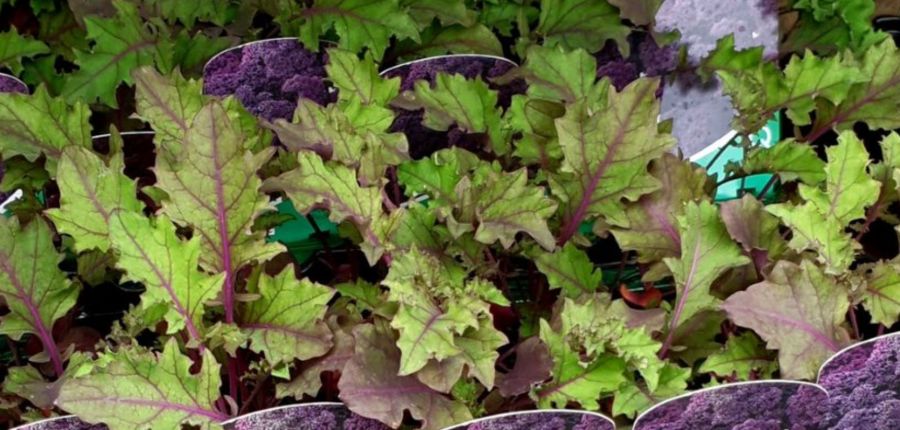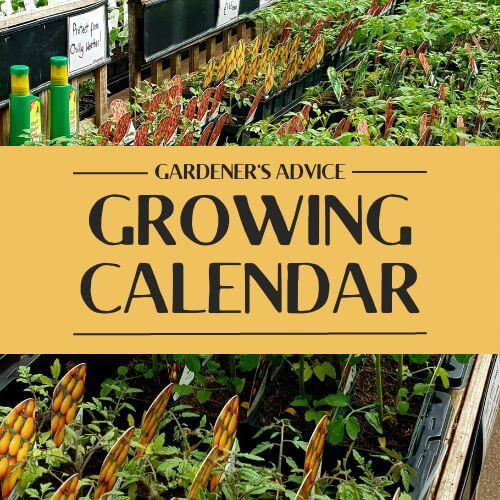Time for some cautious seed sowing - Brassicas
Posted By: rocket veg Category: Growing Veg, Seasonal AdviceAfter what seems like a never-ending spell of wet and cold weather, there have been a few signs of improvement in recent days, so if, like me, you are itching to make a real start at getting this season’s vegetables underway, the time is nigh. A word of caution though: in order to germinate successfully, most veg seed needs a consistent temperature of seven degrees or above, so keep an eye on the forecast before embarking on a spate of reckless sowing or you are in for a disappointment.
How to sow brassica seed
If you are ready to begin sowing, why not have a go at raising your own brassicas – the horticultural family name for cabbages, kale, broccoli, cauliflower, kohl rabi and their various brothers and sisters. The seed can be sown in various ways, but if you have a bit of space, the best way is to create a small seed bed in which to sow and raise brassica seedlings to the point when the plants are large enough to transplant to their eventual growing site in June or early July. In its simplest form, a seed bed is simply a small area (50 x 50cm or so) where the soil has been cleared of all traces of weed, bindweed in particular, and then raked to a fine tilth. A few years ago, I made a square frame using recycled timber, its sides 15cm deep, which I fill with soil each time I need to form a neat seed bed. It is important that you don’t sow brassicas in the same spot where they grew the previous year. Not only are germination rates likely to be poor, you run the risk of spreading disease such as club root.
When your seed bed is prepared, take a dibber, short length of cane or similar and draw it through the fine soil to make a series of shallow drills (channels) parallel to each other and about 10cm apart. You’ll need a separate drill for each variety of seed you intend sowing and once these are made, water the whole seed bed well before you begin sowing.
When sowing seed I find it easier to tip the seed from its foil packet into a small pot which makes it easier to handle, then take a pinch of seed and sprinkle a neat line along one of the drills. Brassica seed is small, round and dark – tricky to see once it has landed on the soil – but possible to space out along the base of the drill if done slowly. Don’t forget to label each row as you go so you know which variety has been sown where. Rather than covering each row of seed as I go, I prefer to finish sowing all the seeds first and then cover with a thin layer of fine soil. If you have a garden sieve, now is the time to put it to use, filling it with a trowel-full of soil and shaking the sieve above the lines of seed, a very satisfying process which creates beautiful crumbs of soil to form a duvet over the seeds.
Once done, I cover my seed bed with a tent of horticultural fleece, held up by plastic hoops, which not only helps the germination process but also protects the seedlings once they appear. Be warned: birds love the tasty tips of young veg plants and brassicas are top of the menu! During spells of dry weather, make sure that you water the seedlings on a regular basis.
Sow leeks too
When sowing brassicas, I also sow a row of leeks at one end of the seed bed so that I have leek seedlings ready to plant out in early summer.
Enjoy brassicas all year round
With a bit of planning, it is possible to have some form of brassica, cabbages in particular, ready for harvesting throughout the year: just sow and plant as follows:
For cabbages to eat during the autumn and over winter, sow now and transplant in late June or July. For spring cabbage, sow in July or August for transplanting in September or October. Summer cabbages are usually sow in a cold frame, greenhouse or cloche in February or early March and should be ready for planting out in late April or May. When buying cabbage seed, be sure to check which season the plants will eventually crop.
Brassicas to try
Here are a few suggestions to get you started:
Cabbage: January King (winter cropping); Durham Early (spring); Greyhound (summer)
Cauliflower: Clapton
Broccoli: Romanesco and Purple Sprouting
Brussels sprout: Darkmar F1
Kale: Nero di Toscana (‘black leaf kale’); Dwarf Green Curled or Redbor for a red-leaved alternative.
Kohl rabi: Kongo AGM







